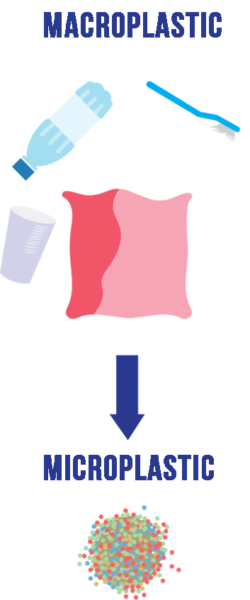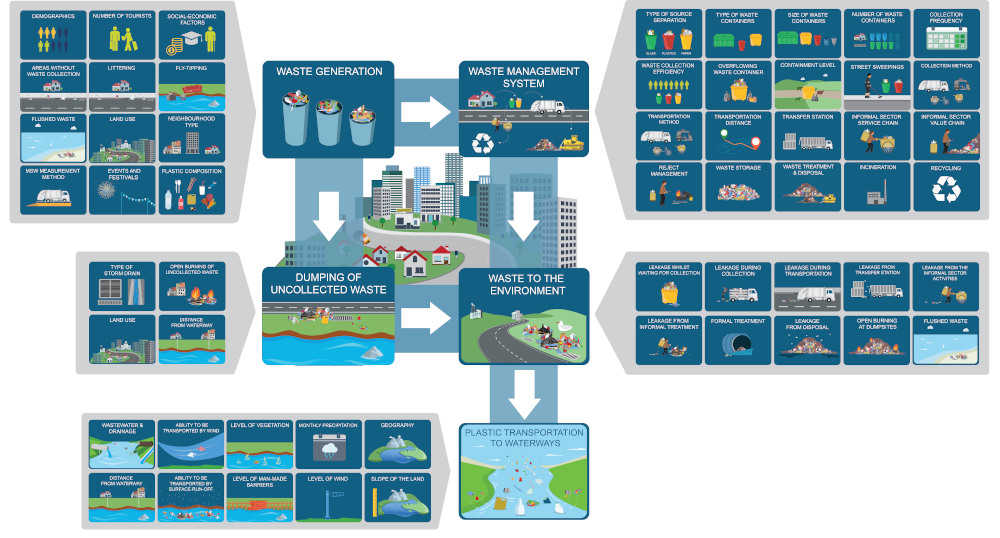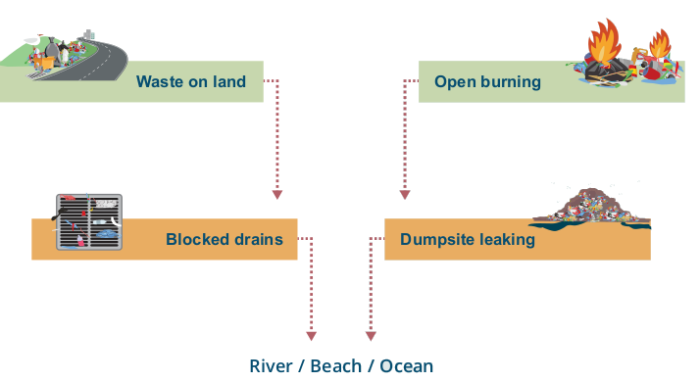The Science Behind....

Whilst much research is currently being devoted to microplastics, arguably there needs to be an increased focus on macroplastics sources and pathways. Not only do these cause far reaching impacts due to their improper management, but the macroplastic inevitably degrades into innumerable pieces of microplastic if mismanaged. Action is therefore need to understand the sources of plastic pollution, and intervene before it becomes uncontrolled in the environment.
It is currently believed that the leakage of macro-plastic items from land to marine environments is mainly a result of lack of waste infrastructure and services, unsound waste management practices such as open dumping, and local socio-economic conditions, such as prevalence of littering. Since these vary at country, city and even neighbourhood levels, it is vital to focus on the details of these local characteristics so as to understand all the factors at play.
The ISWA Plastic Pollution Calculator was developed based on the extensive experience the University of Leeds Research Team has on waste systems around the world to map the waste flows through often complex waste management systems. Equally applicable to the developed and developing world, the Calculator includes analysis on important and often overlooked characteristics such as the informal recycling sector, fly-tipping, events and festivals, tourism, and drainage systems to name a few.

Using its in-built methodology, the Calculator starts by correcting existing data on waste generation to account for flows typically excluded from such measurements such as uncollected waste and that managed by the informal recycling sector. This plastic waste is then systematically mapped through the waste management system using material flow analysis (MFA), breaking each flow down into a complex matrix related to both the initial source activity (type of household, commercial or institutional activity) and the item-level composition of that plastic (e.g. bottles, carrier bags etc.). This matrix allows the waste flows to be treated differently within the MFA based on for instance their recyclability or based on the waste management practices employed for each source.
Plastic emissions to the environment (commonly termed ‘leakages’) are estimated based on internal conceptual models within the Calculator that relate the quality of the waste management infrastructure and practices to the level of plastic capable of escaping. In this way, it is possible to account for the complexities associated with plastic leakage such as the presence of lids on bins, the frequency of waste collection, the types of transportation vehicles used or the level of control of the disposal sites. Not only does this allow the most detailed overview of plastic pollution sources to date, but it further allows engineering and infrastructure interventions to be targeted at these ‘gaps’ in the solid waste management system.
Once released into the environment, the physical properties of each plastic item become important, dictating their likelihood or being transported by either wind or surface. Taking a whole system approach to the plastic pollution impacts, the Calculator quantifies not only the plastic entering rivers and therefore having potential to become marine litter, but also factors such as indiscriminate dumping of waste blocking drains, to its open burning releasing polluting emissions.

